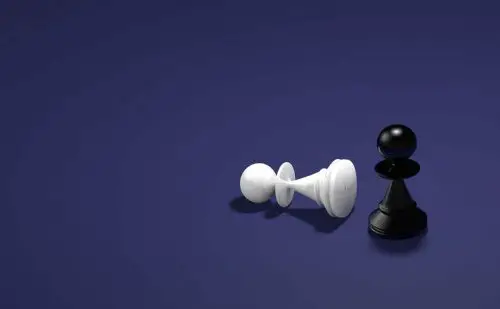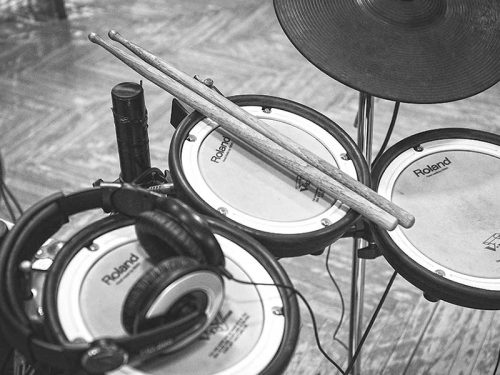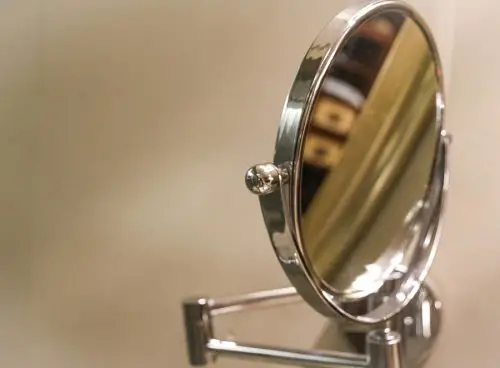Mike Tyson Training Strategies and Punching Techniques: Tyson certainly deserved the success he enjoyed. Hard work ran through the blood in his veins. Remember that he would work out 8-10 hours per day, 6 days per week. He would add to that mental training which made it a total of 10-12 hours per day invested for his expertise. He would spend 50-60 hours per week in training – that is more than you spend in your office.
Genetics may make you only a heavyweight but the rest all depends on the boxer.
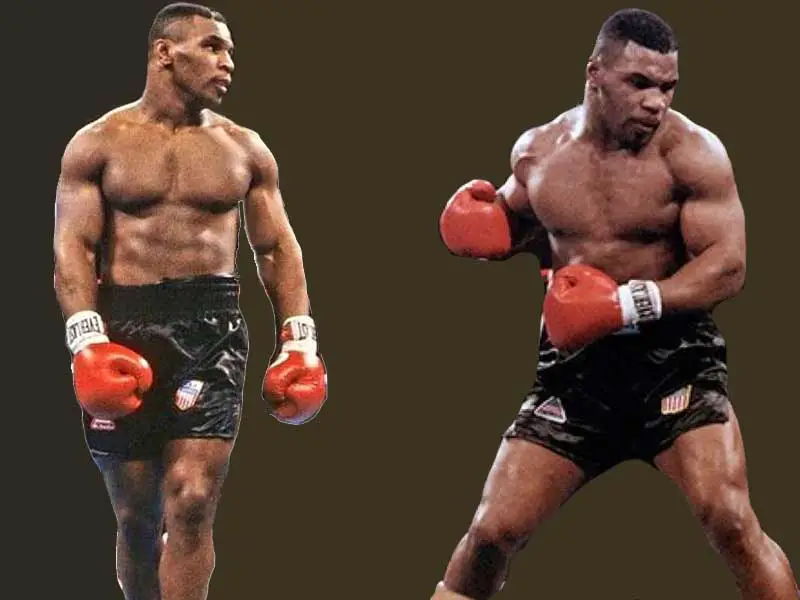
Inspiring your journey, one story at a time. #LifeFalcon.
There may have been innumerable other “genetic heavyweights” as well but none of them became Mike Tyson and that is where his special power training comes into play.
Table of Content
Let Us See What Tyson’s Usual Workout Was Like. Train like Mike Tyson:

- Wake up at 4 in the morning – 3-5 miles of jogging
- Breakfast
- Sparring for 10-12 rounds
- Pushups, sit-ups, dips, shrugs & 10 minutes of neck work
- Lunch
- 6 rounds: sparring, slip bag, bag work, pad work, jump rope & speed bag.
- Calisthenics
- Shadowboxing with focus on technique
- Extra calisthenics
- Dinner
- Exercise Bike (cooling down)
- Studying fights/training footages
Collective Reps in Calisthenics:-
Sit-ups = 2000
Pushups = 500
Dips = 500
Shrugs = 500
Neck Bridges = 30 min.
This is a simple summary but it can go a lot deeper than this according to interviews, magazines, books, and testimonials. Let us immerse into the details of what Mike would do for strength, boxing, psychological training as well as conditioning. His routine had mastery written all over it. He focused on the perfection of every punch, every motion, defensive movements as he would simulate the fight. That is why it was known as iron Mike Tyson training.
Shadow Boxing

His coach said that shadow boxing was most important to any fighter.
This is where habits are built and, thus, it’s essential to focus during it. You shadow box exactly how you fight and throw every punch with high intensity and unleash your maximum potential. Mike would throw a single punch for many rounds to ensure he had attained perfection in it. He threw it as hard and as fast in the best possible form every time.
Another drill he was known for during shadow boxing was moving his head a few times after every punch or combination. His coach thought that one is a good boxer when one hits but is not hit while being exciting as well as that is what makes one a fighter.
This is exactly what Mike’s trainers focused on.
Heavy Bag Workout
For the majority of fighters, the heavy bag is typically only for conditioning. In Mike’s camp, it was different.
When he worked out on the bag initially during his career, it was mostly about form, combos, and power. His coach gave him feedback on each punch and combination he would throw and make him attain perfection as a result.
He would be forced to do some defensive move after each punch and combination to make it his habit.
This is indeed an epic practice for any boxer. For Tyson, it was head movement.
His coach also called out number combos and made him perfect the speed, flow, and timing of every single punch. They had a rare number system.
When they called out the combo in a fight, the opponents weren’t aware of what would be thrown at them.
Below are Mike Tyson combinations or Mike Tyson strategy:
- Left hook at the body, left uppercut at head
- The jab at the body, right hand at the head
- Left hook at the body, right hook at the head
- Left & right hook at the body, left hook & right at head
- Right Hand left hook
Many-Body/Head Combinations Were Used By Tyson For Tricking And Distracting His Opponents.
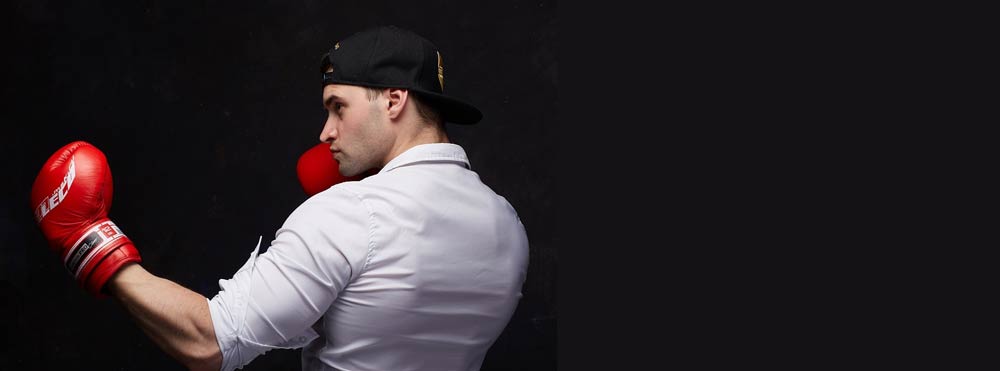
Finally, he frequently credited the heavy bag for power rather than strength training. He claimed that power is derived from working on your punches’ snap. Later in his career, his coach increased weight and had him hitting heavier stuff even up punching bags of 300 pounds. When he was only 16, Mike was able to swing bags that full men can’t budge.
A heavy bag is a great tool for increasing your punching power. According to Tyson, you should work on your snap, form, and, especially, intensity. He would never hold back punches on his heavy bag and used to hit it as hard and fast as possible. No wonder, Mike Tyson’s punching technique is almost a standard in boxing.
Sparring
As far as sparring was concerned, there was really none in the gym of Mike’s coach.
There were no practice fights – only proper fights. When he would spar, it would be a fight. His coach didn’t endorse taking sparring easy at all.
They brought experienced heavyweight professionals for sparring with him and, not surprisingly, many did not want sticking around as these sessions were really damaging.
Tyson was frightening to spar as he punished and hurt anyone who stepped in the ring.
His coach did not like headgear as well as he said it gave an unearned sense of security to the fighter. The way you train is the way you fight. So his coach ensured that each sparring session was like a real fight to the fullest so he would be on his toes.
Very infrequently, Mike would be seen with a headgear while sparring. If you are interested further in knowing how to box like Mike Tyson, see his videos as tutorials.
Defense Training
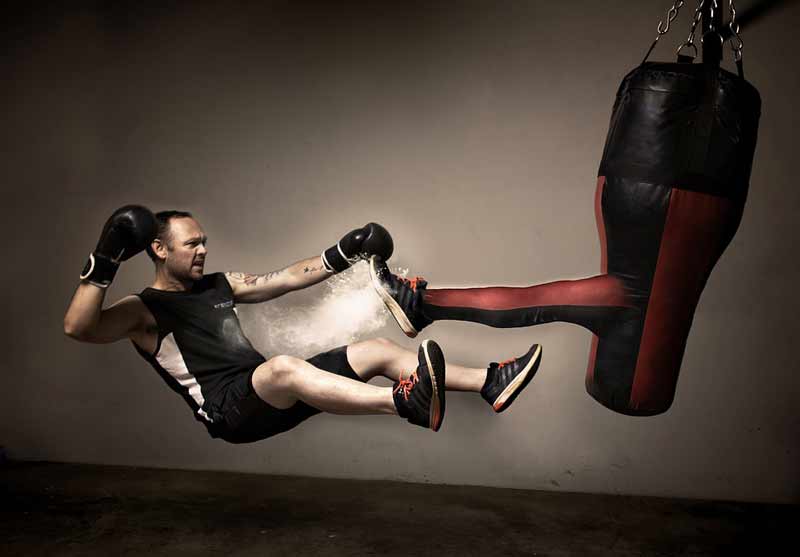
Inspite of being an aggressive man in the ring, Mike was in reality a defensive player. He was hardly hit clean and had mastered dodging punches. It allowed him being a great counter puncher as well. Thus, Mike Tyson tips, contrary to common opinion, are not all about attacking.
Mitt Work Routine
Kevin Rooney was appointed to help Tyson on the pads. There are few short videos online of Tyson training and knocking pads off Rooney’s hand. Their main focus was on slipping or countering. The highlight was Tyson dodging punches thrown at him. It appeared as if a major portion of the training focused on slipping shots after every combo. The Mike Tyson technique is not for every Tom, Dick and Harry.
Slip Bag
The slip bag became popular due to Mike and is still among the top tools around for improving slipping punches and to time it correctly. His coach had it in the gym throughout and most players did practice with it. It is indeed a very good thing for getting your timing right as far as moving your head is concerned because it provokes you, without seeing, to time the slip motion. It could work your outlying vision as time shots which loop around line of sight. Like every training exercise of Mike, he ensured moving his head after every combo and throwing a combo after moving his head.
Head Movement
Irrespective of whether it was heavy bag, shadow boxing working pads, sparring, or any drill for that matter, Mike would move his head a lot.
All his coaches and trainers ensured he would repetitively do this. It was built into Mike’s style and was actually a habit for mixing offense and defense into a single fluid exercise.
His hands would be at the chin; his chin would be tucked; his shoulder would be snapped for defending his chin and he would move his head after and before every combo. He was indeed the cleanest fighter on earth.
Strength Training Routine

This is exactly what majority of readers want to explore while searching for Tyson’s Workout.
They really want to discover how Tyson managed to develop his power as well as physique.
Many people don’t believe it at all but it is true that Tyson didn’t lift any weights in the early phase of his boxing career.
He said before the Frank Bruno fight that although Frank had a nice physique but weights were as important to boxing as cheesecake.
We interpret that Tyson meant that weights are neither an ingredient for success nor failure in the world of boxing.
Calisthenics Routine
It Was Rumored Online That Mike’s Daily Routine Was the Following:-
- Five hundred dips
- Five hundred pushups
- Five hundred shoulder shrugs
- Two thousand situps
- Thirty minutes neck bridges
Where many call this routine as fake, it isn’t very far from reality. As far as quantity is concerned, he really did that every day.
He only didn’t do all in one go. He would do some sets in between workouts. For instance, he sparred and then did some sets of calisthenics. He hit the bag and then did more sets of every exercise mentioned above.
The collective total is what the online workout amounts to but it is only what he would do at the gym and in the training camp. Tyson actually did a lot more than this. In “Iron Ambition”, he said that he would wake up early morning even before school. He went for a run of 4 miles, came home and do pushups 400 times followed by 400 squats.
So Tyson’s strength training schedule wasn’t confined to what he only did at the gym. He said that he would bet with his friends for pushups rather than money and they would actually perform them as well. He recalled a time when he ran four miles, walked ten miles and did two thousand situps.
His routine was, thus, flexible but was always based on similar principles. He managed to build his power with time.
He himself said that he began with rep numbers which were very low and, gradually, increased with time.
Thus, We Can Safely Say That The Figures Below Are Factual When It Comes To Mike:
- More than 500 pushups per day
- A ton of roadwork and squats
- 2000 sit ups
- Neck bridges – 10 min per set
Neck Workout
Mike Tyson has a neck which can be described as one of the wonders of this world. If you don’t believe it, see its picture and you would be amazed.
It was 20-22 inches which is very big for his own size. He made this kind of neck with wrestler bridges and shoulder shrugs.
He did the later with a 30kg or 75kg barbell. He managed to do around 500 reps in a day. As far as neck bridges are concerned, he was able to do for 10 consecutive minutes – typically, 3 sets per day. If you have ever done neck bridges, you would exactly know how unbelievably tough Mike’s drill was.
He did not make use of any neck harness which Maywaether or most boxers today use though they are for neck strength too.
Leg Workout
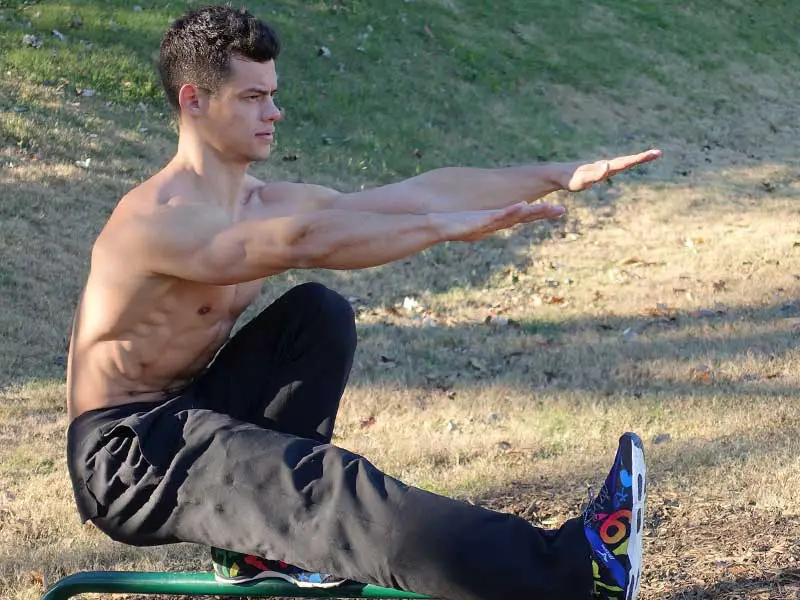
It is said that Mike did 400 squats per day prior to school but he used to do an interesting workout in prison. Known as “Tyson Squat Workout”, it was mentioned in his book, “Undisputed Truth.”
It is simple as no weights are needed.
He would grab 10 cards from a pack, lay them all on floor shoulder to shoulder few inches from each other.
Then he would stand infront of the 1st card and do a squat for picking it up. He would take a horizontal step infront of the subsequent card and do a squat for putting the card down on top of the one on floor. Then he squatted 2 times more for picking up every card.
Then he would step to next card, squat down 2 times for putting the cards down, do 3 more squats for picking up all 3 card and continue to do that till he would pick up all cards.
These would add up very fast and would hurt too much.
If you are able to handle this, go back in reverse order putting cards back down or adding the number of cards you laid down. Whenever you squat, you pick up or put down a card.
For legs, it is indeed one hell of an intense workout.
Tyson and Lifting Weights
Mike Tyson only started lifting weights after he was finally out of jail. Before jail and in jail, what he would do for strength training was either calisthenics or conditioning training like jump roping and road work. After getting out of jail, he started weightlifting only because all fighters had power and conditioning – so this was something you were supposed to do. It was slightly evident in Mike’s physique as well as fighting style. He was no longer that flexible after prison.
It could be the rust or the weights or both. When he was directly asked about weightlifting in an interview, he denied a lot of indulgence in it and said he relied only on boxing and hitting the bag. He did it later in his career as everyone else was doing it.
So he did not want to lose on strength and conditioning as compared to others. Once, during his teens, Mike was able to do it with 225 pounds easily.
It speaks volumes of his strength as a kid but he did not achieve his great physique with any lifting of weights.
Conditioning Training
For development of immense stamina, Tyson used to do the usual boxing workouts which include jump roping, running and other exercises.
He woke up as early as 4 am daily for running 4-5 miles and, later, walking as many as 10 miles. It is not certain how often he would do this but similar to strength training, he went for a random run as well; so it was not separate from his morning acts at all. Besides, he would jump-rope frequently before and after prison.
In this drill, he was responsible for having among the most explosive routines ever and he wasn’t a boxer who passively jumped while on it. It was very intense just like any other thing about Mike Tyson.
Mental Training
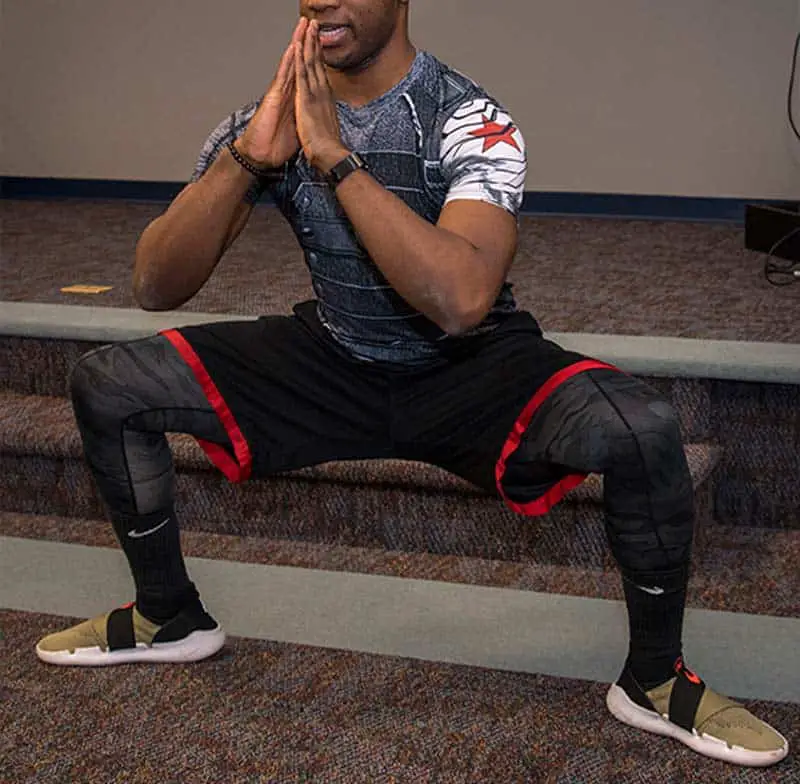
Both Mike Tyson and his coach strongly believed in the theory that fighting was hugely mental.
Tyson used to say that since everyone in the ring was in shape, this didn’t make the difference.
His great coach put a lot of time and effort in training his mind in boxing IQ plus character. For the earlier, Tyson watched many tapes. At night, after training was over, he went in the attic for watching videos of legendary boxers.
He watched players of all sizes to learn what they excelled in and to find mistakes where they didn’t excel that much.
Deliberate Practice
In his widely read and sold book, “Talent is Over-rated”, the author talks about genius as the result of deliberate practicing instead of just practicing.
In the world of boxing, practice is throwing punches; however, deliberate practice is throwing punches with aims of perfecting each punch with some expert present there for giving critical feedback on where you went wrong. Mike had this opportunity 24/7 throughout a year.
He was lucky to have access to great professionals like Cus D’Amato, Kevin Rooney, and Teddy Atlas. Furthermore, when they were away, they watched his training or sparring footage for improving the weaknesses in his playing. It was what you call deliberate practicing at its best and this is how he trained his own body for becoming an ideal fighting machine.
Encircled By Fighters
Mike lived in his coach’s house which was crowded by fighters. At dinner, they sat and discussed boxing. His coach asked him all sorts of questions plus boxing trivia for keeping his mind alert provoking him to reach his memory quarters of the players he had studied. This exposure to the kingdom of boxing fine-tuned his mind to the fullest. He would study boxing like he trained for it ensuring he had an IQ in the ring enough for defeating shrewd and more experienced boxers.
Assertion
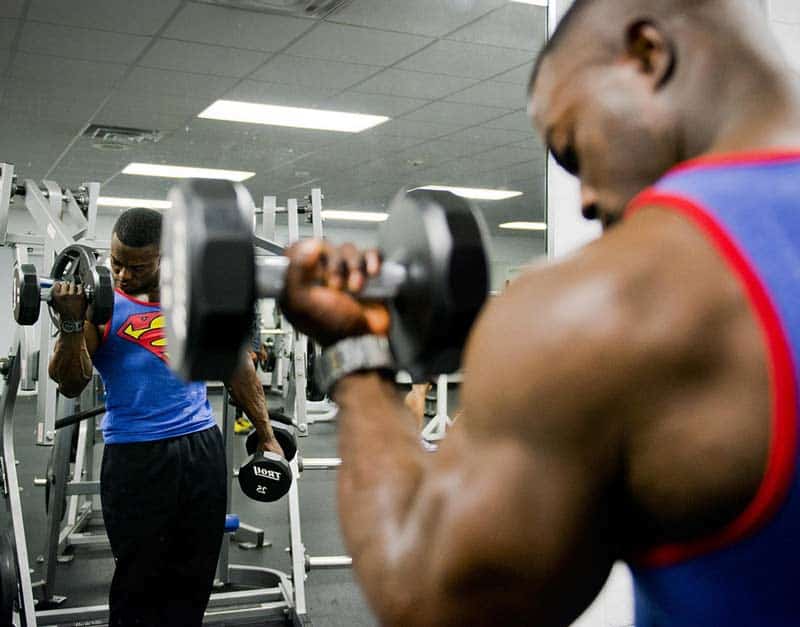
His coach was a complete master at building his character and mindset. When Cus was appointed, he immediately said that Tyson would become a world champ.
Tyson labeled it brainwashing but Cus tried his best-inculcating confidence in Tyson.
He already knew what Science later learned that confidence in doing something actually makes you much better at it.
He would tell Tyson how amazing he was going to become and why.
He also inculcated in him being intimidating and scary. He told him on a daily basis that he should put fear into rivals.
Tyson repeated self-affirmations in which he would say to himself that every day, he was getting better; he was the best fighter; no one in this world could ever beat him.
The more Tyson said it, the higher was his self-belief. Ultimately, he thought he could defeat all six billion humans on this planet in a fair fight. MT, people won’t disagree with you!
Hypnosis
In his book, Mike said Cus took him and other boxers to a hypnotist. Under hypnosis, Cus told Mike he possessed a very strong jab, he timed it too well and he would beat anyone he would ever face. He had become the fighting machine.
He was the best boxer God had created.
The world never saw a boxer like him. When he threw his punches in combos, he was ferocious – fierce. His intent was to give maximum possible pain.
His jab was a weapon similar to battering rams.
His goal was pushing his opponent’s nose into his head’s back. He threw punches with bad motives. He moved his head after each punch. He was a menace sent from God—the world would know his name till eternity.
He was not being told this as if he was not capable of doing all this. This wasn’t a séance. It is what he is capable of achieving. It was needed that he should relax as this was to help him.
All this was no joke at all. Mike said things like these obviously don’t work for many people but with Cus saying them daily, he would nail it daily.
The Mike Tyson Footwork
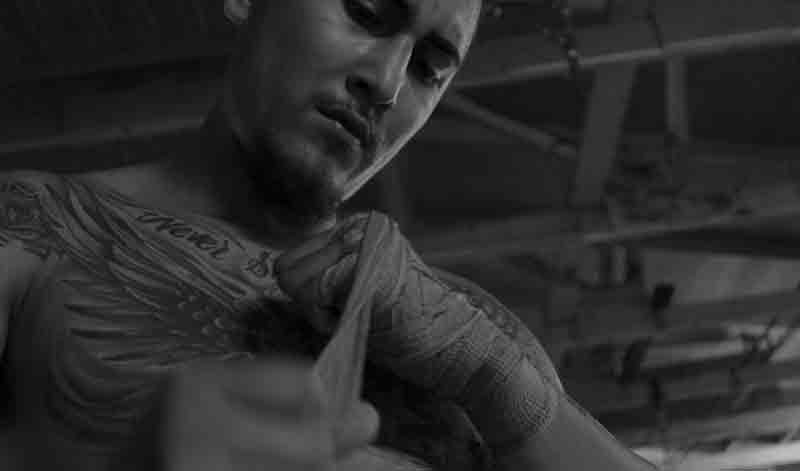
Mike Tyson, rather than having an orthodox stance, often had a southpaw stance.
There were multiple reasons why he did this. Mike first moved forward, then missed and when his opponent was close to his right hand, he turned southpaw for delivering either uppercuts or right hooks.
He attacked using left punches; his opponent moved to his right side for escaping. He stopped his opponent’s motion using the right hooks at the head or body.
At other times, he initiated his attack in an orthodox manner and defensively landed in a southpaw manner with the right foot beside his opponent’s left foot for cutting the ring or preventing his opponent from moving towards the right or catching him with southpaw right hands if he would escape.
Let us see few examples of southpaw attacking.
One is that Mike would do it by crossing his legs for covering distance and cutting the ring.
First Technique
Mike slipped an incoming jab, stepped right foot on the front, and then stepped left foot while delivering a jab. It is known in boxing as crossing the feet and starters are recommended to not do it. Making use of this type of footwork, he cut the ring keeping the opponent close to the corner confusing him and covering more distance as well.
Second Technique
Mike started with a southpaw stance for keeping the opponent to the left. His right southpaw hooks were ready for being launched if and when needed. He stepped in with the left foot for delivering a left as well as right hook, closed the distance turning orthodox again.
Breakdown of His Technique – Angle of Attacking
Mike would cut an angle and attack from the left side. This was an amazing attack as he stepped on the front and to the left, then turned his hip to temporarily become southpaw and attacked with the left hand from the side of his opponent. He also attacked with the southpaw right hook at this position as mentioned below.
Anticipatory Placement of Right Foot on the Front
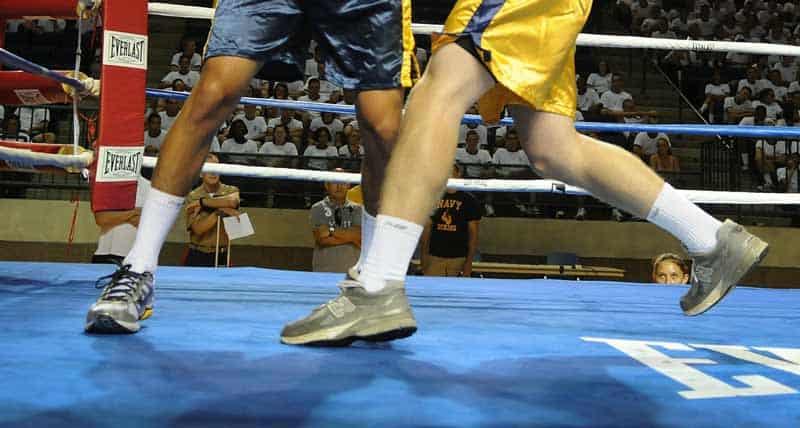
As said earlier, Mike was a small-sized heavyweight and tactically placed the right foot on the front for covering distance and confusing the opponents.
Do note that in all cases below, his opponent was towards the left corner while he was in front of the opponent.
First Technique
Mike attacked with a jumping left hook and while the opponent was near the ring’s left corner, he preemptively landed the right foot in front for cutting the ring and getting in a position for attacking with southpaw right hands.
Second Technique
This was also a preventive placement of the right foot’s front. Mike exaggerated so much in his motion that he managed to trip the opponent. This is what you call the trademark Tyson trip.
Third Technique
Here is another trip similar to the earlier one but here Tyson placed the right foot on the front after a right cross and then delivered a southpaw left hook that tripped the opponent. We aren’t saying that he intentionally tripped the opponents but the foot’s placement indeed made it possible.
Fourth Technique
Mike was in his crouching stance when the opponent went for a left uppercut. He moved the right foot on the front and then delivered a wonderful southpaw left hand.
Foot Placements: Attack with Southpaw Right Hooks If Opponent Escaped.
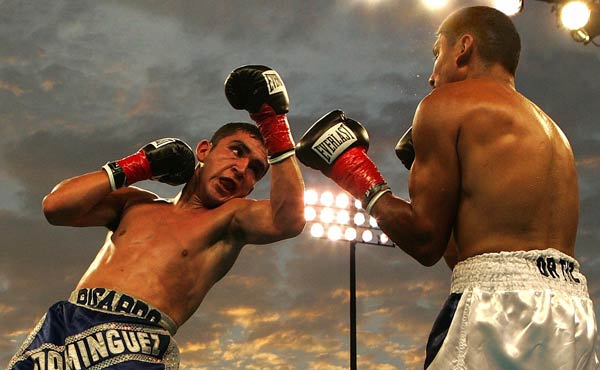
First Technique
Mike attacked with the right hand, placed his right foot, and went for a left hook. This time, the opponent escaped and kept moving to the right side of Mike.
Mike delivered another left hook and was in southpaw stance while his right hook was in a position for landing with vicious motives.
Second Technique
Mike used the right hand, 2 jumpings left hooks and jumping right hook which landed in a southpaw stance for hunting down the opponent.
This was an indication of his unorthodox method and his defying of traditional stances or footwork for catching the opponents and covering a greater distance. Note that the opponent almost had to run backward for escaping.
Third Technique
It is another instance of Mike using a southpaw stance or right hook for stopping opponents from an escape towards the right side. The best method for the opponent for escaping it was to use a duck-under as Mayweather does.
More Mike Tyson Specials
One of Mike’s most expert techniques was slipping to the left, performing a jumping switch to a southpaw stance, and delivering brutal right hooks. We can label it as ‘southpaw reset’.
Others name it differently but also in cool ways.
In video clips of Mike, do note how he would place his right foot at the front and between the legs of the opponent when he switched to southpaw mode. By slipping left and switching stances, he used a spring-like movement for storing kinetic energy and exploding with power.
Do carefully watch the angle of his attack.
Mike was towards the side in the ideal position for looking at the right ear of his opponent which is important for making an opponent compromise on his defense.
A right uppercut (front) with a power hand from the southpaw stance is devastating as a punch for the strongest opponent around.
If boxers would step the left foot back prior to throwing a right uppercut, their weight would be transferred to the front or right foot giving their hips kinetic energy similar to a spring.
From this stance, the right uppercut blasts with immense power.
On Google, you can easily find good-resolution-pictures of Mike doing southpaw for delivering right uppercuts. Do note how Mike would deliberately pull back his left hook for getting in a position for a right uppercut. He did have among the most ferocious uppercuts in the history of boxing.
Once Mike was with his back against ropes and the opponent tried a right uppercut.
He slipped left for avoiding it, went out of the centerline to cut an angle towards left while making full use of what you call a “southpaw reset,” delivered the right uppercut, missed with his left hand and landed 2 epic right uppercuts or hook hybrids.
He loaded weight on the right foot immediately after he slipped the uppercut. In another fight, Mike attacked with a left hook at the body and when the opponent escaped towards the right, he turned his hips, remained southpaw, and went for a right uppercut. In a different fight, Mike moved the right foot in front of the left foot of his opponent and attacked with the right uppercut.
He did a southpaw-reset, repositioned his right foot towards the middle of the feet of his opponent, went for another right uppercut for forcing the opponent to lift up his hands, and attacked with 2 left hooks at the body since the hands weren’t there for protecting the liver.
Mike Tyson Peekaboo
A hallmark of Mike’s spectacular boxing is his popular trademark known as Peekaboo style in which the hands are kept in front of a boxer’s face similar to the baby game named Peekaboo.
It grants additional protection to the face making it easy to jab your opponent’s face.
This boxing style can be credited to Mike’s legendary coach, Cus. Peekaboo makes use of relaxed hands with forearms in front of your face with your fist at the level of nose/eyes. More special features of it are side-to-side movements of head, weaving, bobbing, and blind-siding your opponent.
A boxer using this style is drilled with a stationary dummy as well as on the bag until he is in a position to punch with rapid combos with what Cus would label as bad intentions.
This style allows quick movements of the neck, swift duckings, and bad returning damage typically with rising uppercuts and rising hooks.
You Should Do The Following:
- Slip punches right and left, down and up.
- Slip punches while you turn the ears towards the shoulder. Slip fully to your right and slip fully to your left.
- Bend the knees not the back while changing levels.
- Keep, permanently, your eyes on the opponent
- Keep the gloves glued tight on your chin’s sides for avoiding being hit by your glove while the punch of your opponent does hit your hands.
These were few general principles of Cus’s peekaboo boxing.
Although Tyson was immensely influenced by his training or concepts, he was still a rare fighter and did implement a personalized version of peekaboo that didn’t essentially follow the rules mentioned above. Tyson’s version was a multi-functional weapon with the following functions:
Range finding:
Tyson was a short boxer; so the peekaboo style of motion was his way of closing the gap and coming in the range for hitting the opponent.
Defense:
The most efficient way to avoid getting damaged is the movement of head and altering angles while you protect the chin.
Offense & Power Generation:
Tyson moved his head right and left and transferred his weight from one leg to another. This made him explode forward and jump at the right angle for landing punches with overwhelming force.
Counter offense:
Rolling under and slipping punches is indeed very effective for launching and landing counter punches.
Strategy:
The punches which knock out the opponents are those which they don’t see coming. Puzzling your rivals is the best method for creating openings and defeating them. Mike’s peekaboo catalog kept his opponents guessing, thus creating unwanted openings in the defense.
Note that it is indeed threatening as well as frustrating for your opponent who is trying his best to counter it.
Discipline Matters Too Much
Both Tyson and Cus stressed just how important is discipline. In the end, it won’t matter if you know Tyson’s entire training schedule or not but do you practically apply yourself like he did?
Be it looking like him or performing like him, it solely depends on the actual work you put in.
If you wish to fight like Tyson or appear like him or you simply want to challenge yourself, it is high time you get to some serious work.
His style came into being by brutal repetition.
What made him look and play that special was anything but genetics – it was a consequence of sheer discipline and exhausting work ethics.
One Mike Tyson hook is worth countless hours of tireless commitment and perpetually alive passion.
All Hail the Legend
Mike Tyson, the world salutes and thanks you for being such an inspiration and source of motivation for millions of people around.
You are the right definition of the English word, Superstar – the dictionary may be of sports in specific or the entire language in general!
Featured image credit:






